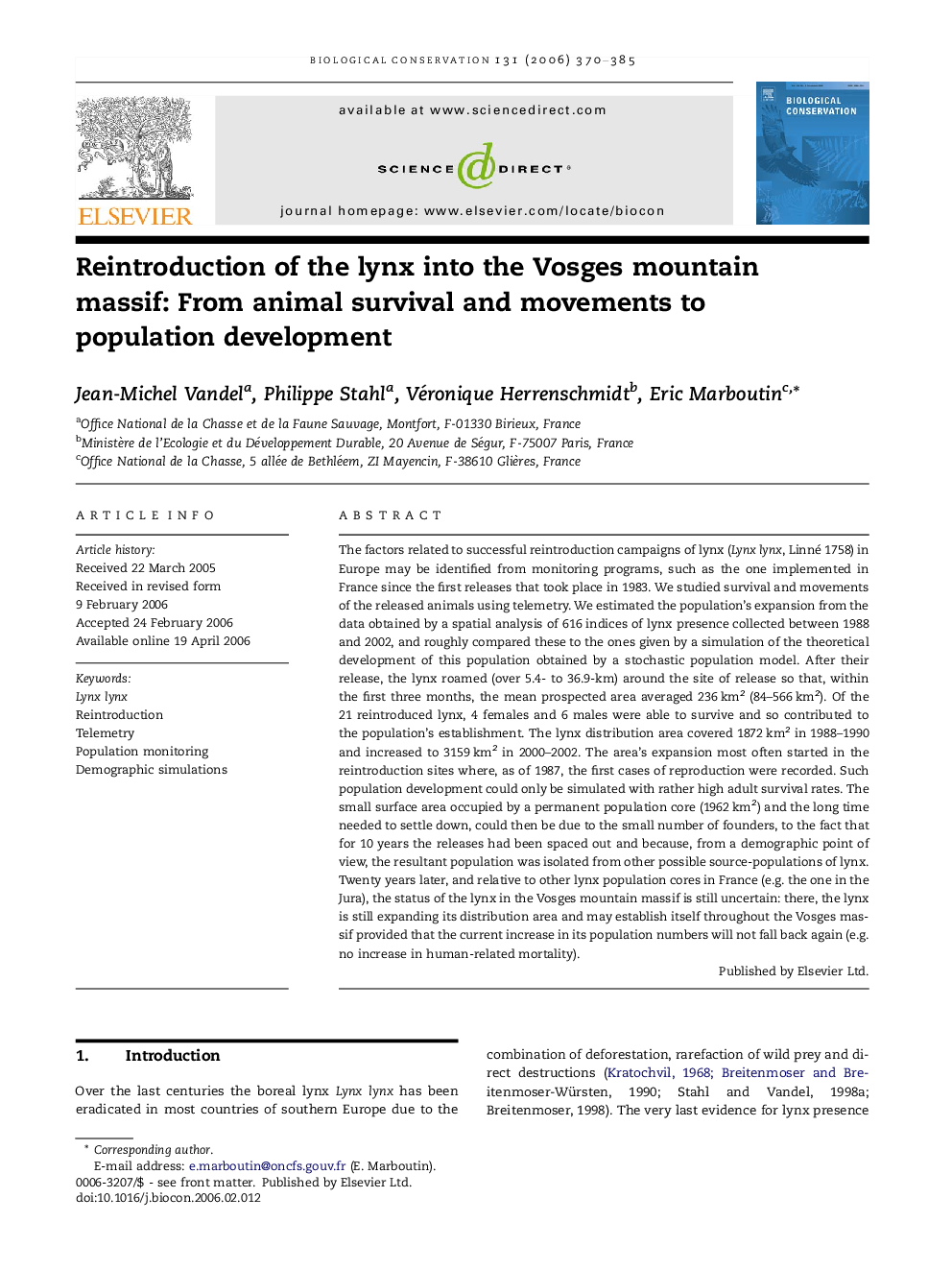| Article ID | Journal | Published Year | Pages | File Type |
|---|---|---|---|---|
| 4387460 | Biological Conservation | 2006 | 16 Pages |
The factors related to successful reintroduction campaigns of lynx (Lynx lynx, Linné 1758) in Europe may be identified from monitoring programs, such as the one implemented in France since the first releases that took place in 1983. We studied survival and movements of the released animals using telemetry. We estimated the population’s expansion from the data obtained by a spatial analysis of 616 indices of lynx presence collected between 1988 and 2002, and roughly compared these to the ones given by a simulation of the theoretical development of this population obtained by a stochastic population model. After their release, the lynx roamed (over 5.4- to 36.9-km) around the site of release so that, within the first three months, the mean prospected area averaged 236 km2 (84–566 km2). Of the 21 reintroduced lynx, 4 females and 6 males were able to survive and so contributed to the population’s establishment. The lynx distribution area covered 1872 km2 in 1988–1990 and increased to 3159 km2 in 2000–2002. The area’s expansion most often started in the reintroduction sites where, as of 1987, the first cases of reproduction were recorded. Such population development could only be simulated with rather high adult survival rates. The small surface area occupied by a permanent population core (1962 km2) and the long time needed to settle down, could then be due to the small number of founders, to the fact that for 10 years the releases had been spaced out and because, from a demographic point of view, the resultant population was isolated from other possible source-populations of lynx. Twenty years later, and relative to other lynx population cores in France (e.g. the one in the Jura), the status of the lynx in the Vosges mountain massif is still uncertain: there, the lynx is still expanding its distribution area and may establish itself throughout the Vosges massif provided that the current increase in its population numbers will not fall back again (e.g. no increase in human-related mortality).
